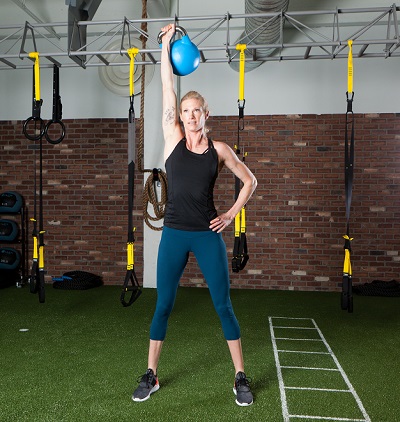by Mackennon Klink, CSCS, PN1
It’s one thing to know what to eat, which exercises to do, and how to do the exercises, it’s a completely another thing to actually do all that – consistency. If you have tried and failed to establish a long term, healthful habits, then you know all too well what I’m talking about. Changes, whether they come in the form of a job, responsibilities, new home, or healthful habits can feel stressful.
Without question, your habits are more powerful than desire or motivation. Motivation is an excellent tool to kick your butt into gear and get started, however it will be your habits that will power you throughout to the end. You see, in order to successful change, you must prepare for that change and understand that it isn’t a linear path.
1. Set goals – TODAY
You know you need to make improvements, so it’s time to create some goals. . Goal setting is both a science and an artform. The majority of individuals think goal setting is simply choosing something they don’t have (i.e. lose 20 pounds) there’s more to it than that. Saying you want to lose 20 pounds isn’t a goal, rather it’s a statement. In order to set your goal, you’ll need make it specific, realistic, with short and long term components, and focus on our behaviors rather than outcomes.
2. Set goals that are specific and measurable:
“I want to lose 20 pounds” isn’t much of a goal because it doesn’t really give you anything measurable or specific to work on. Simply depending on a scale number isn’t too reliable for our daily weight can fluctuate up to 5 pounds throughout the day depending on what we are eating. However, changing your goal to “I want to lose 20 pounds of body fat” is specific since it is refers to losing one thing – body fat – and it’s measurable, since it specifies a number – 20 pounds.
3. Set goals that are challenging, yet realistic:
Goals must be big enough to inspire you into action, yet not so big that you get frustrated with the impossibility of accomplishing them. A goal like “I will lose 80 pounds and be on the cover of GQ magazine” is a bit too lofty for most people (#sorrynotsorry). Instead, a better goal for someone who weighs 160 pounds and has 25 percent body fat, challenging, yet realistic goal is something like “I will be 130 pounds and 12 percent body fat after a full year of training.”
4. Frame your goals around behavior, rather than outcomes:
To be clear, a behavioral goal is based on something you can directly control and do yourself whereas an outcome goal is based on the end product of a series of behaviors. The sad truth is too many individuals only set outcome based goals such as:
- I want to lose 20 pounds
- I want to make $100,000/year
- I want to squat 315 pounds
While these goals are specific, measurable as well as challenging and realistic, they are focused only on the outcome. Outcomes are beyond your control. You cannot control your rate of fat metabolism, or force your boss to pay you 100K. You can, however, focus on your behaviors. So, how do you pick behavior based goals? Try these:
- I will exercise 5 times a week
- I will eat protein with every meal
- I will have either fruit or veggies with each meal
- I will drink 150oz of water daily
In the end, if you make goals out of your behavior and things you can control, your outcome goals (i.e. lose 20 pounds) will fall right in line – without you having to worry about them (Sorry, but I cannot help you with getting 100K job; still working on that one myself)
5. Set goals with short term and long term components:
In order to achieve your challenging, yet realistic goals, you must break them down into smaller behavioral-based goals. Make the behavioral-based goals applicable for today, the bigger goals applicable for next week and so on. Save the biggest goals of all for later. In this way, you’ll create mile markers on your road to metabolism-boosting success.
6. Tell someone your goals:
Once you set your specific goals that you are committed to achieving, tell someone your goals right away. If you keep your goals a secret, it’s easier to blow them off to either ignore or completely forget them. By telling someone your goals, they will help keep you more accountable. If you have someone holding you accountable to a higher standard, you’ll be more likely to get it done.
7. Actively Pursue your Goals
It’s one thing to know what to eat, and how to exercise, it’s a completely different thing to actively pursue your goals by actually doing the things you said you are going to do. If you have tried to establish a long term, healthful habit many times overs, you know exactly what I’m talking about. Change can feel stressful, however, focus on the thing you can control – your actions, mindset, and behavior. Remember, what gets managed, gets measured. Focus on creating small behavioral changes, and you’ll be in a prime position to succeed.



